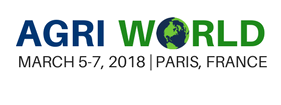Thuzar Linn
Ghent University, Belgium
Title: Mapping and analyzing value chain of rice crop in Ayeyarwady region
Biography
Biography: Thuzar Linn
Abstract
Statement of the Problem: In this paper, the value chain of rice crop in Ayeyarwady Region, Myanmar is analyzed. The issues with respect to the rice value chain are complex and multifaceted in this region. The challenge for Myanmar is thus to understand and, more importantly, identify the constraints facing the marketing system and develop strategies to overcome these bottlenecks. The purpose of this study is to structure of the rice value chain in Ayeyarwady Region, to analyze the marketing costs and margins of the
various actors along the rice value chain, to study the socio-demographic characteristics of actors and to identify the different types of constraints on the value chain.
Methodology & Theoretical Orientation: The different characteristics of different actors are identified by purposive and simple random sampling methods. The descriptive statistics, cost and return analysis, and marketing cost and marketing margin analysis are used in this study.
Findings: The studied rice value chain encompasses different actors: i.e. farmer, primary collector, miller, wholesaler, retailer and exporter. In this value chain, the millers receive the highest profit share and the farmers have the highest marketing margin distribution. The observed rice value chain is not efficient since the marketing margin is unequally distributed along the chain. The encountered internal constraints are primarily material and production constraints. The external constraints are related to financial, distribution and institutional issues.
Conclusion & Significance: The rice miller is the most profitable actor and the primary collectors and farmers are the most vulnerable actors in the rice value chain. Farm mechanization and improving public and private extension programs are needed to raise the profit of the farmers. The development in infrastructure such as transportation, power supply and banking is needed to support through private-public partnership for the development of the rice value chain sector.

